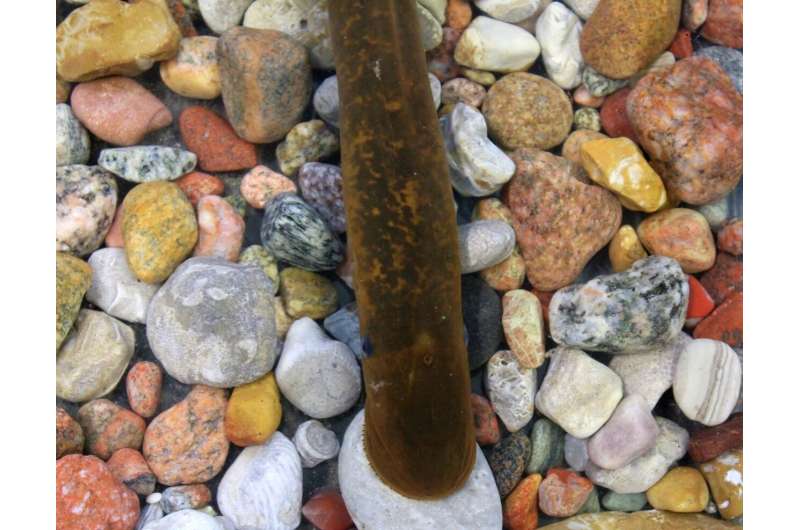Aphrodisiac pheromone discovered in fish semen

An aphrodisiac pheromone discovered in the semen of sea lampreys attracts ready-to-mate females, according to a study publishing July 9 in the open-access journal PLOS Biology by Anne M. Scott of Michigan State University, Zhe Zhang of Shanghai Ocean University, and colleagues.
In fish and other animals that use external fertilization, exposure to semen promotes spawning behaviors. However, no specific compounds in semen have been identified as aphrodisiac pheromones. In the new study, Richard Neubig, Weiming Li, and their colleagues sought to identify a pheromone from the milt (fish semen) of the sea lamprey (Petromyzon marinus)—a jawless fish that spawns in aggregations where each spermiating male defends a nest, and ovulatory females move from nest to nest in order to mate. The researchers hypothesized that compounds in the milt may signal to ovulatory females the presence of spawning, spermiating males.
They found that an odorous compound called spermine, originally identified from human semen, is indeed a milt pheromone. At very low concentrations, spermine stimulated the lamprey olfactory system and attracted ovulatory females, but did not attract males or pre-ovulatory females. They identified the specific spermine-activated receptor in lamprey olfactory tissue, and a compound that blocks this receptor prevented the attraction of ovulatory females to spermine.
"We found the semen of sea lamprey contains spermine, a highly specific and potent pheromone, which attracts only ready-to-mate female sea lampreys," said Anne Scott. "This discovery implicates a new strategy that male animals use to recruit mates through the release of chemical cues in semen. Ovulatory females likely use spermine released along with sperm as a reliable signal for the presence of actively spawning males in the vicinity."
The results elucidate a mechanism whereby a pheromone in semen attracts ready-to-mate females and implicates a possible conservation of the olfactory detection of semen from jawless vertebrates to humans. According to the authors, their identification of milt pheromones may also have management implications for either the control or conservation of sea lamprey populations.
More information: Scott AM, Zhang Z, Jia L, Li K, Zhang Q, Dexheimer T, et al. (2019) Spermine in semen of male sea lamprey acts as a sex pheromone. PLoS Biol 17(7): e3000332. doi.org/10.1371/journal.pbio.3000332
Journal information: PLoS Biology
Provided by Public Library of Science




















